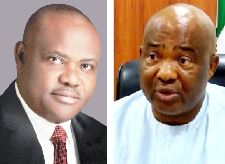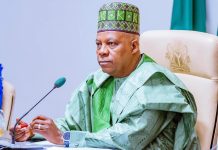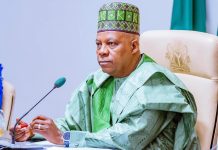Africa Press-Nigeria:
Unemployment rate in Nigeria rose to 27.1 per cent in the second quarter 9Q2) of 2020 up from the 23.1 per cent recorded in Q3, 2018 with Imo, Akwa Ibom and Rivers States leading the pack.
According to the latest report by the National Bureau of Statistics (NBS), underemployment rate increased from 20.1% in Q3, 2018 to 28.6 per cent
NBS said a combination of both the unemployment and underemployment rate for the reference period gave a figure of 55.7 per cent, meaning that 27.1 per cent of the labour force in Nigeria or 21,764,617 million persons either did nothing or worked for less than 20 hours a week, making them unemployed.
Imo State reported the highest rate of unemployment with 48.7 per cent, followed by Akwa Ibom and Rivers with 45.2 per cent and 43.7 per cent respectively.
The state with the lowest rate was Anambra with 13.1 per cent.
Imo has a total of 1,209,882 million unemployed labour force; Akwa Ibom State has the second highest number of unemployed people as almost half of its total labour force is currently unemployed.
Out of the 2,534,495 million (total) labour force of the oil rich state, 1,144,399 million or 45.2 per cent are in unemployment.
Out of its total 3,921,860 million labour force population, Rivers State recorded 1,714,189 million or 43.7 per cent.
Kaduna and Kano States have 1,339,952 million and 1,424,686 unemployment rates respectively, accounting for 39.8 and 31.6 per cent of their total labour force accordingly.
The statistics office said it decided to deploy the use of computer assisted telephone interview system to conduct the survey based on the restriction of movement across the country due to COVID-19 pandemic.
For the period under review, Q2, 2020, the unemployment rate among young people (15-34years) was 34.9 per cent, up from 29.7 per cent, while the rate of underemployment for the same age group rose to 28.2 per cent from 25.7 per cent in Q3, 2018. These rates were the highest when compared to other age groupings.
NBS explained that during the reference period, the computed national unemployment rate rose from 23.1% in Q3, 2018 to 27.1,while, while the underemployment rate increased from 20.1% to hit 28.6%.
However, it said the number of persons in the economically active or working age population (15 – 64 years of age) during the reference period of the survey, Q2, 2020 was 116,871,186.
This, the bureau noted, is 1.2 per cent higher than the e) State unemployment is a “moment-in-time” index only and can change quite quickly.
“It is therefore, movement across State borders, as job seekers search for employment or economic opportunities figure recorded in Q3, 2018, which was 115,492,969”, it added.
The number of persons in the labour force (i.e. people within ages 15 -64, who are able and willing to work) was estimated to be 80,291,894. This was 11.3% less than the number persons in Q3, 2018.
Of this number, the NBS said those within the age bracket of 25-34 were highest, with 23,328,460 or 29.1% of the labour force.
The total number of people in employment (i.e. people with jobs) during the reference period was dwellers.
It rose to 31.5% from 22.8%, while the rate among urban dwellers rose to 23.2% from 58,527,276. Of this number, 35,585,274 were full-time employed (i.e. worked 40+ hours per week), while 22,942,003 were under-employed (i.e. working between 20-29 hours per week).
NBS said this figure is 15.8% less than the people in employment in Q3, 2020
It added that a total number of 16,285 interviews were completed out of the initial sample of 18,500, giving a response rate of 88% at the end of the survey.







